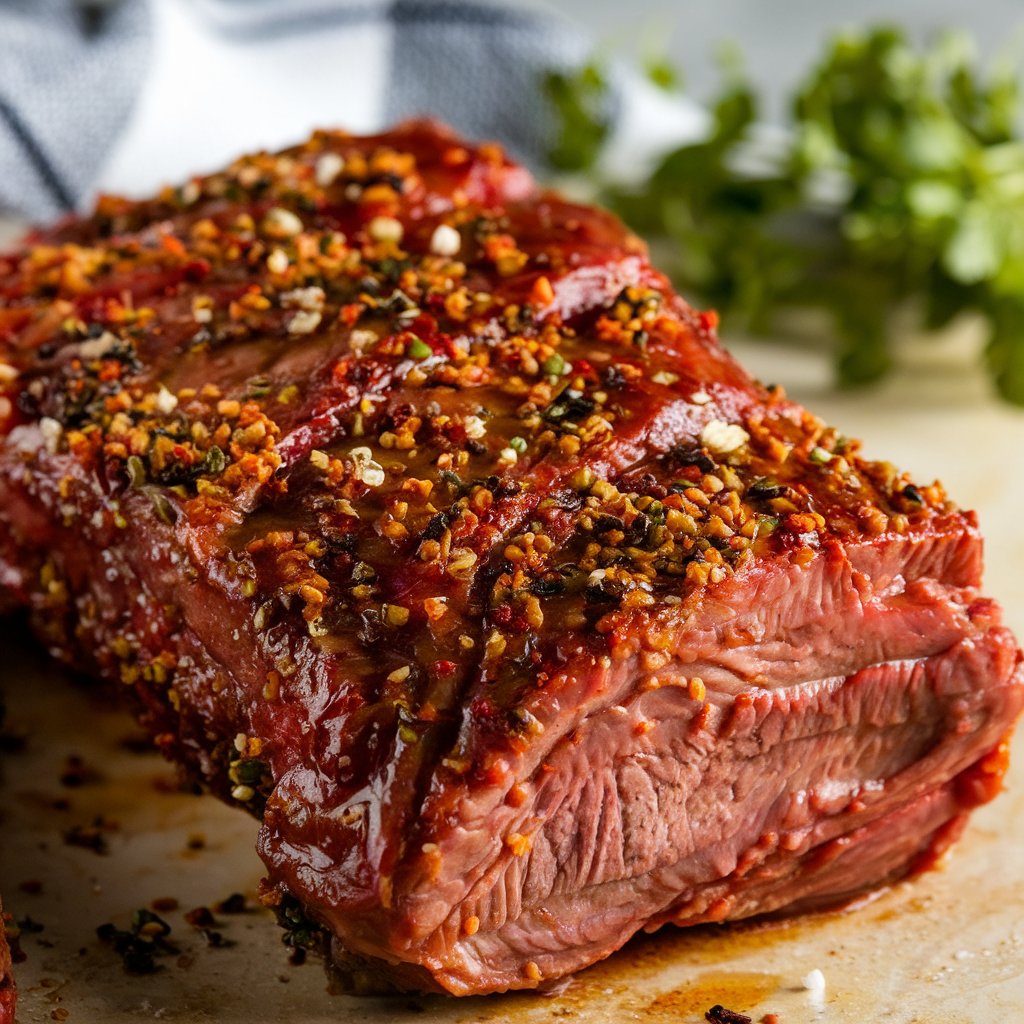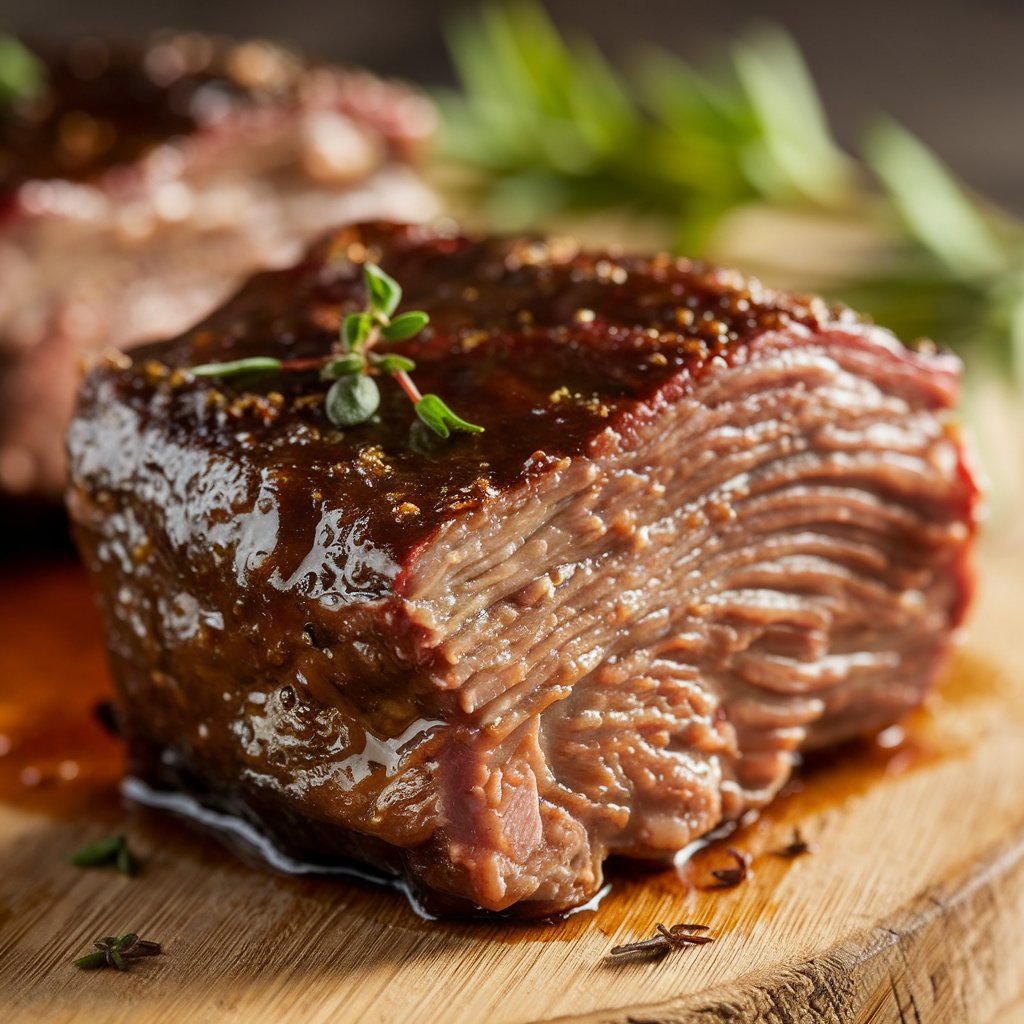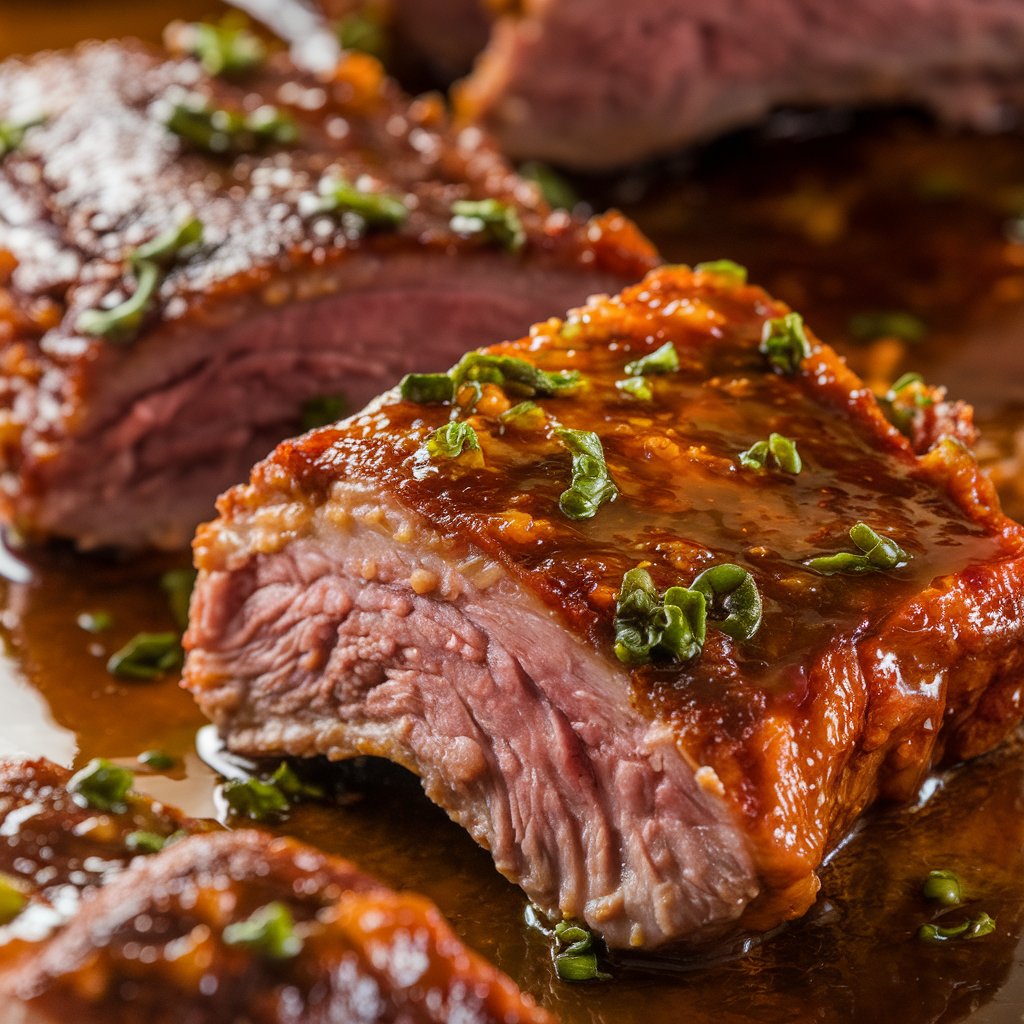Introduction
Short ribs are a rich and flavorful cut of beef that becomes irresistibly tender when cooked slowly. This short ribs recipe is perfect for family dinners, special occasions, or whenever you’re craving hearty comfort food. Whether braised, slow-cooked, or oven-baked, these short ribs are guaranteed to impress with their deep, savory flavors.
Short ribs are the unsung heroes of the culinary world. They’re juicy, tender, and packed with flavor, making them a go-to for anyone craving comfort food with a touch of sophistication. Whether you’re hosting a dinner party or simply treating yourself, mastering a short ribs recipe can elevate your cooking game.
Cooking short ribs may seem intimidating at first, but trust me, it’s a lot simpler than it looks. With the right techniques and ingredients, you can create a dish that tastes like it came straight out of a fancy restaurant. This guide will walk you through everything you need to know, from selecting the best ribs to choosing the perfect cooking method. By the end, you’ll have all the skills to whip up a short ribs recipe that’s both foolproof and delicious.
So, why are short ribs so popular? For starters, they’re incredibly versatile. You can braise them, slow-cook them, or even throw them on the grill for a smoky twist. But their true charm lies in their ability to soak up flavors and deliver melt-in-your-mouth goodness when cooked right.
Table of contents
In this comprehensive guide, we’ll cover:
- The types of short ribs and how to choose the best cut.
- Key ingredients to enhance flavor.
- Different cooking methods to suit your taste.
- Solutions to common cooking issues.
- Serving suggestions and pairings for a complete meal experience.
Choosing the Right Ingredients for Your Short Ribs Recipe

Choosing the Right Ingredients for Your Short Ribs Recipe
When it comes to making a stellar short ribs recipe, it all begins with selecting the right ingredients. Every component of the dish, from the ribs themselves to the spices and sides, contributes to the final flavor. Let’s break it down so you can shop like a pro!
Selecting the Best Cut of Short Ribs
Short ribs can vary widely in quality and style, so picking the right cut is crucial. There are two main types of short ribs you’ll encounter:
Bone-In vs. Boneless Short Ribs
- Bone-In Short Ribs: These are the classic choice for rich flavor. The bones contribute a deep, savory taste as they cook, making them ideal for braising and slow cooking. They also tend to retain more moisture, ensuring a juicy result.
- Boneless Short Ribs: Easier to handle and serve, boneless short ribs are great for dishes where presentation matters. They’re slightly leaner but still pack plenty of flavor.
Pro Tip: Look for marbling! The fat interspersed in the meat is key to tender, flavorful short ribs. Avoid cuts that appear dry or have minimal fat content.
Essential Spices and Herbs for Flavorful Short Ribs
No short ribs recipe is complete without the right seasonings. While the meat itself is rich, the spices and herbs bring out its natural flavors. Some essentials include:
- Salt and Black Pepper: These basics enhance the natural taste of the meat.
- Garlic and Onion Powder: Add depth and a savory kick.
- Paprika: Smoky or sweet, paprika gives your ribs a beautiful color and a subtle earthiness.
- Thyme and Rosemary: These herbs pair beautifully with beef, lending a fragrant aroma to the dish.
- Bay Leaves: A must-have for braising, bay leaves infuse the sauce with a slightly bitter, aromatic flavor.
Pro Tip: Use fresh herbs whenever possible for a brighter, more pronounced flavor.
Additional Ingredients to Elevate Your Dish
Looking to take your short ribs to the next level? Consider these add-ons:
- Wine or Beer: A splash of red wine or dark beer can deepen the flavor of your sauce.
- Vegetables: Onions, carrots, and celery are staples in braising liquids, but mushrooms and parsnips can add an earthy twist.
- Stock or Broth: Beef stock is a classic choice, but chicken stock or even vegetable broth works well in a pinch.
📝 Quote: “The secret to unforgettable short ribs lies in balancing robust flavors with subtle, complementary notes.”
Key Tips for Ingredient Preparation
- Trim Excess Fat: While marbling is essential, too much surface fat can make the dish greasy. Use a sharp knife to remove excess fat before cooking.
- Room Temperature Meat: Let the short ribs sit at room temperature for 20-30 minutes before cooking to ensure even browning.
With these tips in hand, you’re all set to gather the perfect ingredients. But ingredients alone don’t make magic—preparation and technique matter too.
Part 3: Preparing Short Ribs for Cooking
Preparing Short Ribs for Cooking
Great ingredients are just the beginning. How you prepare your short ribs before cooking can make or break the dish. From trimming and cleaning to marinating, proper prep ensures tender, flavorful ribs that will wow everyone at the table.
Prepping the Meat: Trimming and Cleaning
Before diving into the cooking process, it’s essential to prepare the meat correctly. Here’s how:
- Inspect and Trim:
- Check the ribs for any excess fat or silverskin (a tough membrane on the surface of the meat). While some fat is necessary for flavor, too much can make the dish greasy.
- Use a sharp knife to carefully trim away any unwanted fat, leaving a thin layer to keep the ribs moist during cooking.
- Pat Dry:
- Moisture is the enemy of a good sear. Pat the short ribs dry with paper towels before seasoning or browning to help develop a flavorful crust.
- Optional Cleaning:
- Some cooks prefer to rinse the ribs under cold water to remove any bone fragments. If you choose to do this, be sure to dry them thoroughly afterward.
Marinating Techniques for Tenderness and Flavor
Marinating is a game-changer for short ribs. It not only tenderizes the meat but also infuses it with layers of flavor. There are two main approaches:
Dry Rub vs. Wet Marinade: Pros and Cons
- Dry Rub:
A blend of spices and herbs that is rubbed directly onto the meat.- Pros: Quick, easy, and adds a flavorful crust during cooking.
- Cons: May not penetrate the meat as deeply as a wet marinade.
- 2 tbsp smoked paprika
- 1 tbsp garlic powder
- 1 tbsp onion powder
- 1 tsp cayenne pepper
- Salt and pepper to taste
- Wet Marinade:
A liquid mixture that the ribs soak in for several hours (or overnight).- Pros: Deeply penetrates the meat for a robust flavor.
- Cons: Takes longer and can make browning trickier if the meat isn’t patted dry.
- 1 cup red wine
- 2 tbsp olive oil
- 4 cloves minced garlic
- 1 tsp fresh rosemary
- 1 tsp thyme
- Salt and pepper to taste
📝 Quote: “Marinating is like giving your ribs a spa treatment—it relaxes the fibers and infuses flavor.”
The Art of Seasoning
Even if you skip marinating, seasoning is non-negotiable. Here’s how to do it right:
- Even Coverage: Sprinkle salt, pepper, and other seasonings evenly over all sides of the ribs.
- Timing: Season the ribs at least 30 minutes before cooking to allow the salt to penetrate the meat.
- Enhance the Browning: For extra flavor, dust the ribs lightly with flour before searing. This creates a golden crust and helps thicken the sauce later.
Additional Preparation Tips
- Use the Right Tools: A sturdy cutting board, a sharp knife, and a heavy skillet (for searing) are essential.
- Plan Ahead: If marinating, allow at least 4-6 hours for a wet marinade and 1-2 hours for a dry rub. Overnight marination is even better for maximum flavor.
With your short ribs prepped and seasoned to perfection, it’s time to move on to the cooking stage. Whether you’re braising, slow-cooking, or grilling, the methods you choose will determine the final taste and texture.
Cooking Methods for Short Ribs
Once your short ribs are prepped, it’s time to transform them into a tender, flavorful masterpiece. The cooking method you choose will determine the dish’s texture, taste, and overall vibe. Let’s explore the most popular ways to cook short ribs: braising, slow cooking, and grilling.
Braising: The Classic Method
Braising is the most traditional and foolproof way to cook short ribs. It involves searing the meat and then cooking it slowly in liquid, resulting in fall-off-the-bone tenderness.
Step-by-Step Braising Process
- Sear the Ribs:
- Heat a large, heavy-bottomed pot or Dutch oven over medium-high heat. Add a splash of oil, and when it’s hot, sear the ribs on all sides until golden brown. This step locks in flavor.
- Remove the ribs and set them aside.
- Build the Flavor Base:
- In the same pot, sauté chopped onions, carrots, and celery until softened. Add minced garlic and cook for another minute.
- Stir in tomato paste for richness, and deglaze the pot with a splash of red wine or beef broth, scraping up the browned bits at the bottom.
- Add the Ribs and Liquid:
- Return the short ribs to the pot and pour in enough liquid (beef broth, red wine, or a mix) to cover them halfway. Add bay leaves, fresh thyme, and rosemary for aromatics.
- Cook Low and Slow:
- Cover the pot and transfer it to a preheated oven at 325°F (160°C). Let the ribs cook for 2.5 to 3 hours, checking occasionally to ensure the liquid hasn’t evaporated.
- Finish and Serve:
- Once the ribs are tender, remove them from the pot. Strain the sauce if desired, and reduce it on the stovetop for a glossy, flavorful finish.

Slow Cooker Short Ribs Recipe
For those who prefer a hands-off approach, the slow cooker is your best friend. This method allows the flavors to develop over several hours, making it perfect for busy days.
Benefits of Slow Cooking
- Set It and Forget It: Minimal monitoring is required.
- Flavor Development: The extended cooking time allows the spices and aromatics to deeply penetrate the meat.
- Convenience: Prep in the morning, and dinner is ready when you get home.
How to Slow Cook Short Ribs:
- Sear the short ribs as you would for braising and place them in the slow cooker.
- Add chopped vegetables, herbs, and liquid (such as beef stock or red wine) to the cooker.
- Set on low for 7-8 hours or high for 4-5 hours.
- Remove the ribs, strain the liquid, and reduce it for a thicker sauce.
Grilling Short Ribs: Adding a Smoky Twist
Grilling short ribs is a fantastic way to infuse them with a smoky, charred flavor. This method works best for thinner cuts or Korean-style short ribs.
- Marinate the Ribs:
- Use a soy-based marinade with garlic, ginger, sesame oil, and brown sugar for an authentic flavor. Marinate for at least 4 hours or overnight.
- Preheat the Grill:
- Heat the grill to medium-high. Oil the grates to prevent sticking.
- Grill to Perfection:
- Place the ribs on the grill and cook for 3-4 minutes per side, depending on their thickness. For bone-in ribs, cook over indirect heat for even cooking.
- Rest and Serve:
- Let the ribs rest for a few minutes before serving to retain their juices.
📝 Quote: “Grilling short ribs brings out their bold, smoky essence, perfect for summer barbecues.”
Tips for Choosing the Right Method
- Braising: Ideal for hearty meals and classic comfort food.
- Slow Cooking: Perfect for busy schedules and easy prep.
- Grilling: Best for outdoor gatherings and when you crave a smoky flavor.
Each method has its unique appeal, but the key is patience. Good things take time, and short ribs are no exception.
Common Problems and Solutions When Cooking Short Ribs
Even with the best ingredients and preparation, cooking short ribs can sometimes pose challenges. From tough meat to unbalanced flavors, these issues can be frustrating. But don’t worry—most problems have simple solutions. Here’s how to troubleshoot common issues and ensure your short ribs turn out perfect every time.
Tough Meat: What Went Wrong and How to Fix It
One of the most common complaints about short ribs is tough, chewy meat. Short ribs are naturally tough due to the connective tissue and muscle in the cut. However, slow cooking and proper techniques can transform them into tender, melt-in-your-mouth bites.
Possible Causes:
- Under-Cooking: Short ribs need sufficient time to break down their connective tissue.
- High Heat: Cooking at high temperatures can dry out the meat before it becomes tender.
Solutions:
- Cook Low and Slow: Always cook short ribs at a low temperature for an extended period. For braising, aim for 2.5 to 3 hours at 325°F (160°C).
- Add Liquid: Ensure there’s enough liquid in the pot or slow cooker to keep the meat moist.
- Check for Doneness: The ribs are ready when the meat easily pulls away from the bone with a fork.
Achieving the Perfect Sauce Consistency
A watery or overly thick sauce can detract from the dish. The sauce should be rich, flavorful, and the perfect consistency to coat the ribs without overpowering them.
Possible Causes:
- Too Much Liquid: This can result in a runny sauce.
- Insufficient Reduction: Failing to reduce the liquid after cooking leaves the sauce thin.
Solutions:
- Thicken the Sauce: After removing the ribs, simmer the sauce on the stovetop until it thickens to your desired consistency. You can also whisk in a slurry made from 1 tablespoon of cornstarch and 2 tablespoons of water.
- Balance the Flavor: Taste as you reduce the sauce. If it becomes too salty, add a splash of water, cream, or unsalted broth to balance it.
Balancing Flavors: Avoiding Overpowering Ingredients
Short ribs are rich, so balancing flavors is crucial. An overly salty or sweet sauce can mask the meat’s natural goodness.
Possible Causes:
- Too Much Salt or Sugar in the Marinade: Over-marinating can intensify these flavors.
- Overpowering Ingredients: Strong spices or acidic elements like vinegar can dominate the dish.
Solutions:
- Dilute Overpowering Sauces: Add more liquid (like beef stock) to tone down excessive flavors.
- Use Sweeteners Sparingly: While a touch of sugar or honey can enhance the dish, too much can make it cloying.
- Add Acidity Wisely: Lemon juice, vinegar, or wine should enhance, not overpower. Add small amounts and taste frequently.
Dry Ribs: How to Save the Dish
If your short ribs come out dry, it’s usually a result of improper cooking techniques or insufficient liquid.
Possible Causes:
- Over-Cooking: Even low and slow cooking can dry out the ribs if left too long.
- Not Enough Liquid: Without enough moisture, the ribs can lose their juiciness.
Solutions:
- Rehydrate with Sauce: Baste the dry ribs with sauce or braising liquid, then cover and let them sit for 10-15 minutes.
- Steam to Revive: Place the ribs in a covered pan with a small amount of water or broth. Heat gently until they reabsorb some moisture.
📝 Quote: “Cooking is an art and a science—learning from your mistakes is how you master the craft.”
Burning or Sticking
Ribs that stick to the pot or burn during searing can disrupt the dish and add unwanted bitterness. link..Boneless Beef Short Ribs Recipe
Possible Causes:
- Improper Heat Control: Using high heat without enough oil can cause sticking.
- Not Moving the Ribs: Leaving the meat untouched for too long can cause it to stick.
Solutions:
- Use Enough Oil: Ensure there’s a thin layer of oil in the pan before searing.
- Control the Heat: Medium-high heat works best. If the oil starts to smoke, reduce the heat.
- Let It Release Naturally: Don’t force the ribs to move—when properly seared, they’ll release on their own.
Tips for Troubleshooting on the Fly
- Keep an Eye on the Time: Use a timer to avoid overcooking.
- Taste Frequently: Adjust seasonings as you go to avoid overpowering flavors.
- Be Patient: If the ribs aren’t tender, they probably just need more time in the oven or slow cooker.
No matter the issue, there’s almost always a way to salvage your dish. With practice and attention to detail, you’ll soon become a pro at making short ribs.
Title:
“Easy Short Ribs Recipe: Tender and Flavorful”
Meta Description:
“Learn how to make tender and delicious short ribs with this easy recipe. Perfect for braising, slow cooking, or oven-baking for a hearty meal.”
Focus Keyphrase:
“Short ribs recipe”

